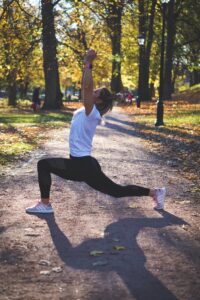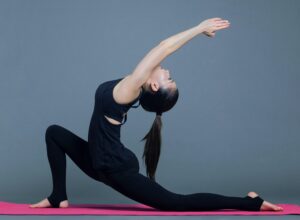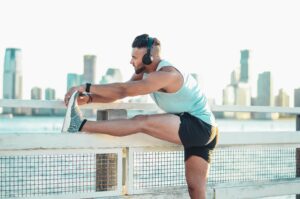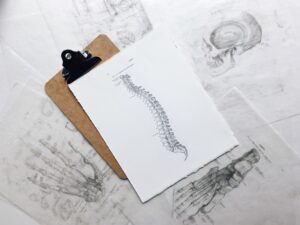
Photo by Charlotte Karlsen on Unsplash
MY STRETCHING RECOMMENDATIONS FOR HIGH PERFORMANCE LIVING
Now that we looked at both the negative and positive side to stretching before workouts, let’s look at what I’ve done myself personally and with my clients.
My goal is to make the warm up and stretching time before your workout the most effective time you’ll spend that day.
Here are my stretching recommendations for high performance living.
OUR NUMBER ONE GOAL:
Prepare your body for movement, while preventing injury and improving performance.
A tall order perhaps but possible if you follow the program in this guide.
HERE’S HOW YOU DO IT
Individualize customize and be precise
You know your body better than any one – regardless of the studies, etc.
You owe it to yourself to experiment one what works best for you.
So try these recommendations and then see what works best.
What helps you get ready, warmed up and ready for action.
I’ll give you my rationale behind each section and see if it makes sense for you.
It’s worked wonders for me and my clients and I know it will help you.
STRETCHING RECOMMENDATIONS BEFORE THE WORKOUT
CIRCLES AND CONTROLLED MOBILITY – Mapping both for warming up and injury prevention.
First you want to start with a general warm up.
I recommend light bouncing here as it helps with circulation and gently warms up the body.
You don’t need to jump rope, just lightly lift your heels up and down and relax the body as you do so.
The second part to moving well is mapping out the muscles and joints from a brain standpoint.
Just like when you’re starting a road trip you map out where you’re going, where you may stop, etc., your body needs a map for movement.
This can easily be done by performing circles at the joint(s) you want to work on.
Mapping in this way gives your brain the information it needs about the current tightness or pain in the muscles and joints..
The final part is a big movement that helps with your breathing and circulation.
The vertical chop works a large amount of your muscles and it allows you to breath while pumping blood through out the body.
Inhale as you lift your arms over head and exhale as you lower your arms as you carefully drop into a squat position.
As with every section in this warm-up these are just suggestions, it is by no means an all inclusive list.
My top 3 choices –
1. Light bouncing
2. Circles at all the major joints
3. Vertical chops with breathing
CORRECTIVE EXERCISES – Balancing what is off in your body
Corrective exercises are designed to release tight muscles and activate the ones that need more work.
By doing so, you balance the stress going through the muscles that way there are no sets of muscles that are doing all the work while others are taking breaks.
Take the hip flexors for example.
Often tight on most everyone because of the amount of sitting that we do.
As the hip flexors get tighter it gets more difficult to activate your glutes.
So you want to do stretches that will help lengthen the hip flexors back to normal ranges and drills that will help the glutes get active again.
This corrects the function I in the hip joints allowing you to feel better and increase function for your workout.
Out of all three sections, corrective exercises tend to need more customization.
It is truly based on what you need to correct and balance in your body.
My top 4 choices –
These are based on the common sitting situations most of us find ourselves in.
1. Chest shoulder stretches
2. Shoulder blade squeezes
3. Hip flexor stretch
4. Hip bridges for glutes
DYNAMIC FLEXIBILITY – High performance Stretching
Now that you’ve corrected and mapped some of your joint movements, you’re ready to take the next in getting the body fully prepped.
Our goal is to bring your warm-up to performance level standards.
Enter dynamic stretching, which can be characterized by performing movements that closely resemble what you’ll be doing in your workout or athletic event.
As you’ll see these movements are more complex combining elements of balance, strength, flexibility and power.
Sometimes, in just one movement.
Again this section lends itself to customization more than just following a basic program.
Just keep in mind the movements or sport that you are doing and create dynamic movements that mimic parts of those movements.
As an example, if you’re warming up for tennis you may want to include rotation, side lunges or even both; lunges with rotations.
That way you are using the same muscles and movement patterns as your workout, training, or competition,
My Top 3 Choices:
1. Walking knee hugs
2. Scoops
3. Lunges with vertical and lateral reaches
My second top 3:
1. Jumping jacks or modified side jacks
2. Wall pushups with rotation
3. Barn Doors for hips
Now you’re ready for action!
STRETCHING RECOMMENDATIONS FOR LONG HELD STRETCHES
Wait, you might be asking where does long hold type stretching fit?
The more traditional type of stretching where you hold a stretch for 30 seconds or longer is best saved for after workouts.
This type of stretching typically relaxes the muscles and the nervous system.
So keep this for after training that way you can fully benefit from this type of stretching with out interfering with your work out.
One final thought about stretching –
You can end your training with immediate stretching if you need it.
This is also where long held stretching fits in beautifully.
A second option is to wait a few hours and let your systems cool down and relax more.
All your systems are on overdrive after a workout so it’s so it’s difficult to get the muscles to relax and stretch.
If you just want to improve flexibility then wait a few hours before stretching.
There you have it!
If you follow this guide form top to bottom you’ll have the frame work for optimal stretching and high levels of performance.
Keep Moving!
~Move Well, Live Better~
Ed Scaduto
Precision Fitness
Related Posts for Stretching:
1. 5 Reasons to stretch before your workout
2. 3 Reasons to avoid stretching before your workout









